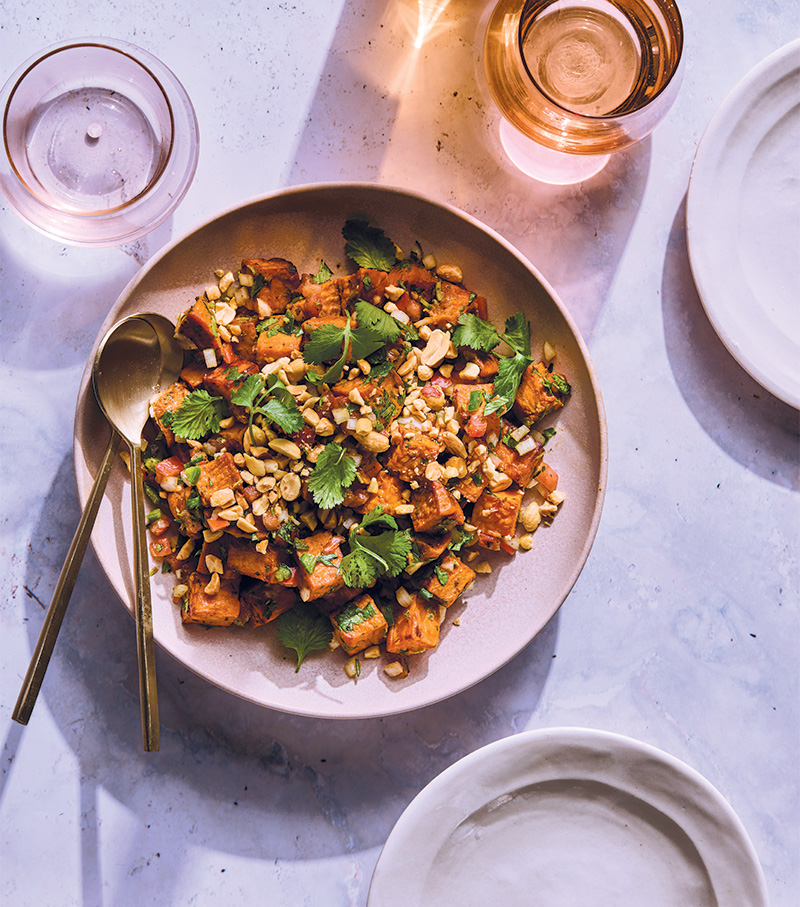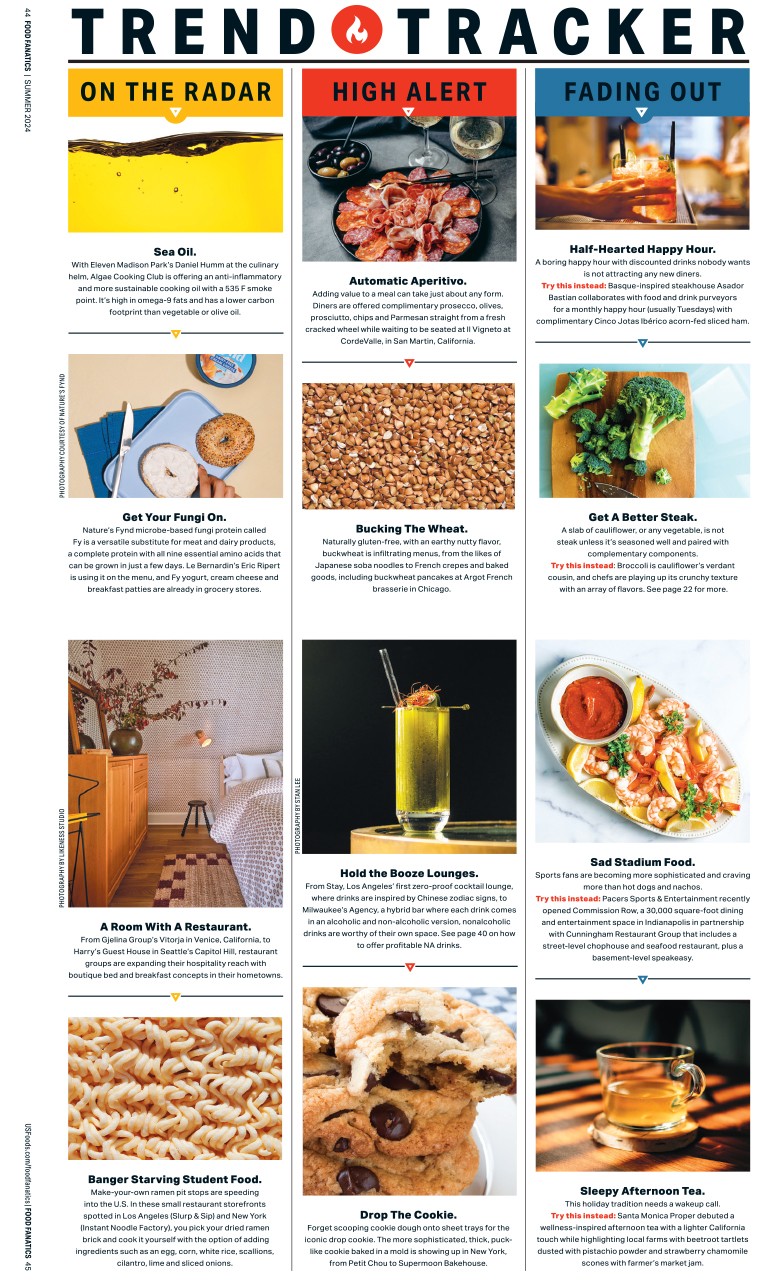Flexibility on the Menu: Accommodating Specialty Diets
Ways to avoid “my way or the highway”
Specialty diets – paleo, vegan, pescatarian and the list goes on – show no signs of diminishing as a way consumers approach eating. But is it possible to accommodate so many types on one menu, especially when preferences go out the window when moods change or temptation for a certain food that’s not on the diet is undeniable?

Menu options that fit into consumer diets – from gluten-free bread and pasta to protein-forward dishes with limited or no carbs and gluten – have become more prevalent throughout the years. The same could be said of cell- or protein-based meat alternatives and higher-quality, gluten-free substitutes, making it easier to make adjustments for all diners.
Chefs say they’re getting the job done by expanding the menu mix: creating options that allow for satisfying substitutions, offering heartier vegetable dishes as starters and entrées and giving more thought overall to their food. Here, they get more specific.
LOOK TO TRADITION
Whether a restaurant specializes in a specific cuisine – Italian, Indian, Mediterranean – or not, classic or traditional dishes can help meet varying needs and inspire creativity.
“Indian cuisine has the largest vegan and vegetarian recipe bank,” says Paramjeet “Param” Bombra, the chef at Gulaabo, an Indian restaurant specializing in Punjabi cuisine that recently opened in Manhattan's Theater District. In fact, Bombra has seen plant-based cuisine growing more popular and estimates that 40% of food sales are vegetarian dishes on a menu that’s 50% meatless.
Lentils are among Bombra's favorite ingredients for a nutrient-dense, high-protein and high-fiber vegetarian option. “Lentils are extremely versatile and also a great source of vitamins and minerals,” he says. “They can be cooked on the stove, prepared in a slow cooker or even pressure-cooked for convenience.”
At Gulaabo, aloo wadi lentil fritters are a popular vegetarian entrée, and Bombra recommends lentils for salads, soups and stews, and blended into dips and spreads. Another bestseller: shakarkand ki chaat, fried sweet potato cubes tossed with tamarind and mint chutney, chaat masala and cumin, topped with crushed roasted peanuts.
KEEP SUBSTITUTES ON HAND
“The whole purpose of a restaurant is that the guest leaves happy,” Lanham says. “Just to know that somebody cares enough to make the effort makes people happy. And when it's good on top of that, they're really happy. It takes us extra time, but in most cases it's just a tweak here or there.”
Lanham's kohlrabi salad with smoked cashew, avocado, apple and shiso is easy to adapt for various dietary restrictions. For tree-nut allergies, the team can substitute sunflower seeds, and they can make the avocado green goddess dressing without dairy if necessary. “We have a big larder of crunchy stuff, so if somebody is allergic to seeds, we throw in nuts,” Lanham says. “If they are allergic to nuts, we throw seeds in. If they are allergic to nuts and seeds, we use puffed rice.”

Lanham always has several ripe avocados in the walk-in for vegans and vegetarians. “Avocado is like a premade puree,” he says. “Throw it in the blender, hit it with some spice or smoke, and it's a pretty quick path to something that's really delicious and gets you to where you need to be.” He also keeps coconut milk on hand and has several sorbets in the freezer.
If a diner is lactose-intolerant but not allergic to dairy, he substitutes butter for cream. “We blend butter into soups all the time and that works,” he says. Or he might opt for goat dairy as a non-lactose substitute.
Lanham’s restaurant has become known for making substitutions, which he says is good for business. He estimates that Anomaly receives 25% more guests any given week by allowing substitutions. “We wouldn't have made it through the first year without doing dietary restrictions,” he says.
BE FLEXIBLE
“My brother-in-law has celiac disease and is also dairy-intolerant, so we tend to think of what he can eat as shorthand for checking all the restriction boxes,” she says. Hill Street's pozole, a hearty Mexican pork and hominy stew with a rich base and multiple garnishes, is his favorite dish on the menu.
HOW TO PLEASE EVERYONE WITH A DIETARY Preference – OR AT LEAST TRY – ACCORDING TO CHEFS
Look to on-trend or popular cuisines and their associated ingredients related to the preference. For example, Indian and Middle Eastern for vegetarians, Mediterranean and Japanese for pescatarians.
Offer more plant-based, whole foods as starters and center of the plate. See more underdog vegetables emerging as bona fide menu stars.
Consider higher-protein grains such as buckwheat, millet and flour blends with chickpea or cassava for gluten-free subs. For meatless diners, try tofu skin to build a dish’s protein profile. These alternatives also attract diners seeking better-for-you ingredients.
Be sure to stock alternatives to nuts, such as seeds. Replace dairy with nondairy products or use an ingredient that adds the intended flavor, mouthfeel and viscosity, such as a seasoned nutritional yeast as a substitute for cheese.
Educate the staff in the front and back of the house on the diverse needs of your customers so it becomes an integral part of the concept ethos.
Above all, be flexible.


 At Anomaly in San Francisco, Chef Mike Lanham and his team accommodate dietary restrictions, which can be a challenge for a 12-course tasting menu. Advance notice is requested, but he says the team can meet the demands of vegan, gluten-free or pescatarian diners on the fly with substitutes that perform the same role in a dish.
At Anomaly in San Francisco, Chef Mike Lanham and his team accommodate dietary restrictions, which can be a challenge for a 12-course tasting menu. Advance notice is requested, but he says the team can meet the demands of vegan, gluten-free or pescatarian diners on the fly with substitutes that perform the same role in a dish. Hill Street in Door County, Wisconsin, has a no-substitutions policy, but owners Karin and Scott Watts nevertheless designed their menu to adapt to dietary restrictions. “Since we are restricting our guests' ability to customize their own experience, we have tried our best to have a very accessible menu despite our strict substitution policy,” Karin Watts says. There's a vegan sandwich and several gluten-free and dairy-free options, and half the menu is vegetarian.
Hill Street in Door County, Wisconsin, has a no-substitutions policy, but owners Karin and Scott Watts nevertheless designed their menu to adapt to dietary restrictions. “Since we are restricting our guests' ability to customize their own experience, we have tried our best to have a very accessible menu despite our strict substitution policy,” Karin Watts says. There's a vegan sandwich and several gluten-free and dairy-free options, and half the menu is vegetarian.
